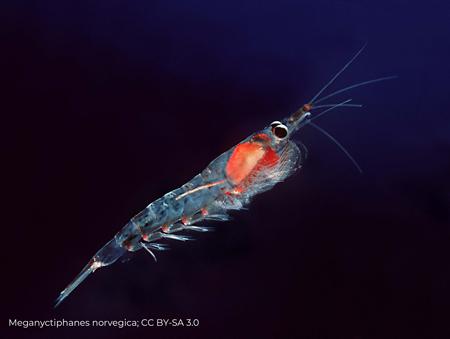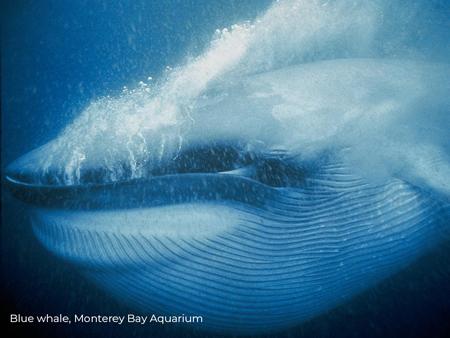
Blue whales, the largest animals that ever lived, eat up to four tons of krill a day to fuel their huge bodies. In fact, krill – about two inches long –make up the majority of their diet. Blue and humpback, and other baleen whales, are filter feeders. They take in huge gulps of seawater dense with krill straining out the water though their baleen and then swallowing their catch.
The baleen plates of humpbacks and blues are pleated and expand to take in the enormous amount of ocean water and prey. As the whale opens its mouth to engulf water, it also inverts its giant tongue to make more room for water and prey. One blue whale gulp can contain as much as 25 tons of water and 10 kilograms of krill. Over several hours of feeding, on blue whale can consume more than a ton of krill!
In the Southern ocean krill are especially important to whales. But climate change that is warming the ocean could mean fewer krill at the base of the food web. In addition decline of sea ice could be disastrous because krill depend on it for shelter and food. If climate change continues on its current trajectory, it could reach a tipping point where the Antarctic ecosystem collapses. And if that is not enough, fishing trawlers haul up tons of krill for nutritional supplements and to feed farmed salmon. What will that mean for whales in the southern ocean?
Watch a blue whale here feeding on krill
And here see tagging of blue whale and feeding and its feeding strategy
Watch humpback whales feeding in Monterey Bay
Read about the disappearing krill in the Antarctic















